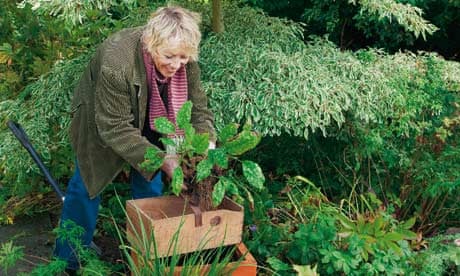Growing plants for free is always an exciting prospect, and though seed will produce many new ones, there are several acts of faith along the way. Dividing plants is more predictable. It is the most direct way to propagate and probably the least fraught. If you follow a few simple rules, division almost always works and you know exactly what you are going to get.
Timing is important: if you dig up a plant in the midst of its growing season, it will be unhappy; add insult to injury by pulling it apart and it will sulk even more. There are two main periods when plants can be divided successfully. Spring division is carried out as the soil warms up and plants start to get into the swing; for some, especially grasses and late-flowering perennials, this is the optimum time to make more. But now, when the soil is still warm and roots can start to take hold, is the perfect time to divide a multitude of other perennials.
Many plants will have been cut back to make way for the autumn show. Deprived of the possibility of making seed, their energy has been concentrated on making roots. Pulmonarias, for instance, flower from Christmas to April, and now, in the midst of their quiet time – before they have made new buds – is the perfect opportunity to make more. Pulmonarias sometimes self-seed, but there is no knowing how these seedlings will turn out. Forms of P. saccharata, P. officinalis and P. angustifolia can be increased only by division; you can either divide P. longifolia and its cultivars, or take root cuttings by potting up sections of root to grow on as new plants.
In my Devon garden at Glebe Cottage, I use pulmonarias extensively in the shadier reaches, and also among other perennials on the sunny side of the garden in whose shadows they happily nestle. This is a good spot for shade-loving spring bulbs, too. At Glen Chantry in Essex, Wol and Sue Staines use flowing borders filled with a succession of herbaceous plants and grasses to house their fabled collection of snowdrops. It's an ideal partnership. I have copied this practice in one of my borders, and in one patch snowdrops are planted with P. saccharata 'Dora Bielefeld', astrantias and sanguisorbas.
To divide the pulmonaria, I lift it gently with a small border fork and lower into a box. Already it has grown in several directions, making new roots. In nature, such plants constantly seek fresh ground, moving away from the old woody centre. You can exploit this propensity when dividing them. Carefully separate the pieces of pulmonaria and break off the old root. Trim the leaves right back, which seems brutal but reduces each piece to its vital self. It has everything it needs to grow into a fine new plant, providing you give it what it needs: a shady site, good soil, a generous helping of organic matter, home-grown compost, leaf-mould or the like, and a good drink. Plant the pieces a handspan apart. The divisions can concentrate on taking root and later will produce leaves. This new growth may not produce flowers this winter, but it will build into a fine, ground-covering swath of rich green, silver-splodged foliage.
